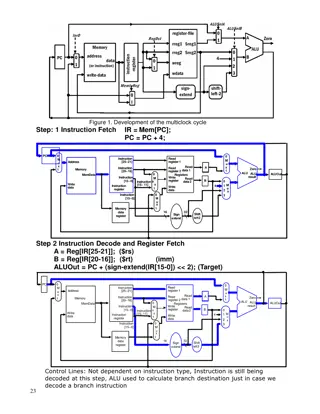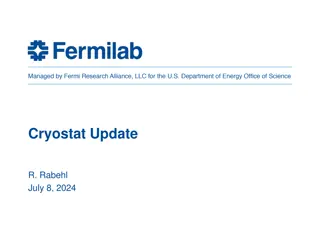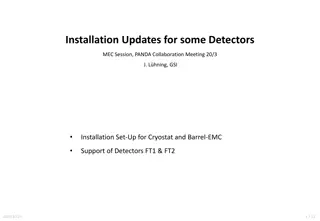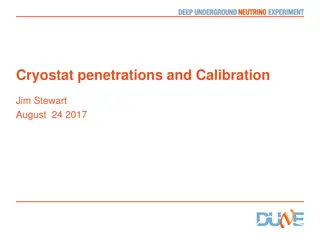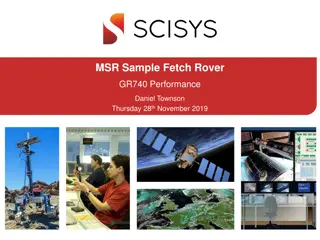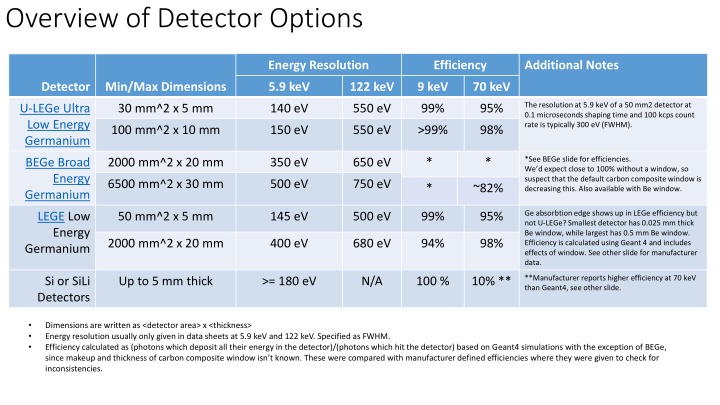
Detector Options for X-ray Energy Measurement
Explore different detector options for measuring X-ray energy such as U-LEGe, BEGe, and LEGe, comparing factors like energy resolution and efficiency. Learn about the importance of Ge absorption edge and detector geometry to make informed decisions.
Download Presentation

Please find below an Image/Link to download the presentation.
The content on the website is provided AS IS for your information and personal use only. It may not be sold, licensed, or shared on other websites without obtaining consent from the author. If you encounter any issues during the download, it is possible that the publisher has removed the file from their server.
You are allowed to download the files provided on this website for personal or commercial use, subject to the condition that they are used lawfully. All files are the property of their respective owners.
The content on the website is provided AS IS for your information and personal use only. It may not be sold, licensed, or shared on other websites without obtaining consent from the author.
E N D
Presentation Transcript
Overview of Detector Options Energy Resolution Efficiency Additional Notes Detector Min/Max Dimensions 5.9 keV 122 keV 9 keV 70 keV The resolution at 5.9 keV of a 50 mm2 detector at 0.1 microseconds shaping time and 100 kcps count rate is typically 300 eV (FWHM). U-LEGe Ultra Low Energy Germanium 30 mm^2 x 5 mm 140 eV 550 eV 99% 95% 100 mm^2 x 10 mm 150 eV 550 eV >99% 98% *See BEGe slide for efficiencies. We d expect close to 100% without a window, so suspect that the default carbon composite window is decreasing this. Also available with Be window. BEGe Broad Energy Germanium 2000 mm^2 x 20 mm 350 eV 650 eV * * 6500 mm^2 x 30 mm 500 eV 750 eV * ~82% Ge absorbtionedge shows up in LEGe efficiency but not U-LEGe? Smallest detector has 0.025 mm thick Be window, while largest has 0.5 mm Be window. Efficiency is calculated using Geant 4 and includes effects of window. See other slide for manufacturer data. LEGE Low Energy Germanium 50 mm^2 x 5 mm 145 eV 500 eV 99% 95% 2000 mm^2 x 20 mm 400 eV 680 eV 94% 98% **Manufacturer reports higher efficiency at 70 keV than Geant4, see other slide. Si or SiLi Detectors Up to 5 mm thick >= 180 eV N/A 100 % 10% ** Dimensions are written as <detector area> x <thickness> Energy resolution usually only given in data sheets at 5.9 keV and 122 keV. Specified as FWHM. Efficiency calculated as (photons which deposit all their energy in the detector)/(photons which hit the detector) based on Geant4 simulations with the exception of BEGe, since makeup and thickness of carbon composite window isn t known. These were compared with manufacturer defined efficiencies where they were given to check for inconsistencies.
Silicon Detector Efficiency Discrepancy I think that Mirion is reporting number of photons which interact with the detector at all divided by total particles hitting detector, whereas I m reporting number of photons in the photo peak only divided by total number of photons hitting the detector. from: http://web- docs.gsi.de/~stoe_exp/web_programs/x_ray_absorpti on/index.php From U-LEGe datasheet Above is counts vs. energy absorbed from Geant 4 w/ 5 mm Si Photons in the Compton continuum: ~(90/0.75)*15=1800=>18% Photons in photo peak = 973 => 9.7% ~28% total
Is Ge Absorption Edge Important? Edge is at 11.104 keV Similar figure not given for U-LEGe. Mirion stated it wouldn t be a concern on our phone call. Maybe the dead layer on U-LEGe is very thin? I believe all our x-ray energies are either below the absorbtion edge, or well above, so it may be irrelevant. Some literature links: Efficiency of Ge(Li) thin window detectors near absorption edge of germanium The response of high-purity germanium detectors to X-rays with energy in the region of the Ge K-absorption edge
Detector Geometry & Efficiency point source distance from detector (mm) 10 point source distance from detector (mm) 5 LEGe LEGe ULEGe BEGe ULEGe BEGe detector area (mm^2) detector radius 3.090194 3.989423 5.641896 25.23133 45.48642 half angle subtended by detector 0.299711 0.379594 0.513672 1.193455 1.354393 solid angle covered 0.280092 0.447268 percent coverage 2.23% 30 50 100 2000 6500 detector area (mm^2) detector radius 3.090194 3.989423 5.641896 25.23133 45.48642 half angle subtended by detector 0.553578 solid angle covered 0.9384 percent coverage 7.47% 30 50 100 2000 6500 0.67345 0.845643 1.375164 1.461313 1.371778 2.115861 10.92% 16.84% 0.81087 3.968147 4.934071 6.45% 31.58% 5.06182 5.596654 40.28% 3.56% 39.26% 44.54% If we go with U-LEGe, it ll be very important to get the detector within 1 cm of the source 5 mm Ge results in thickness near 1, and any increase in thickness will increase the background from gamma rays
Cryostats TODO: Window vs windowless (window doesn t absorb much at our energies) Other options? Need distances to detectors)
Rates Decays Per Second 1. Stopped beam rates from FRIB Estimated Rates 2. Compute number of nuclei deposited on foil which haven t yet decayed after X seconds 3. Exponential decay while foil is being moved into detector, and while in detector PAC1 PAC2 Full FRIB60 stopped beam 9.56E+02 4.78E+03 1.50E+05 After 1 s in beam 9.49E+02 4.75E+03 1.49E+05 60Ga 100 ms after removal 3.53E+02 1.76E+03 5.53E+04 1 s after removal 4.76E-02 2.38E-01 7.47E+00 Stopped beam 4.07E+05 3.67E+06 1.14E+08 After 1 s in beam 9.74E+03 8.79E+04 2.73E+06 73Kr 100 ms after removal 9.72E+03 8.76E+04 2.72E+06 1 s after removal 9.49E+03 8.55E+04 2.66E+06
Questions for Mirion Information on Ge absorption edge in ULEGe Detector to window distances. Want to confirm it s not more than a couple mm. Can we get a larger than 100 mm^2 ULEGe? Can we get the 100 mm^2 detector with a 5mm thick depletion region to reduce gamma background? Confirm that ~10k counts/second is ok for all the detectors we re considering
BEGe Detector Efficiency %solid angle covered should be 0.57% 0.47%/0.57%=82% of photons that hit the detector are seen.






